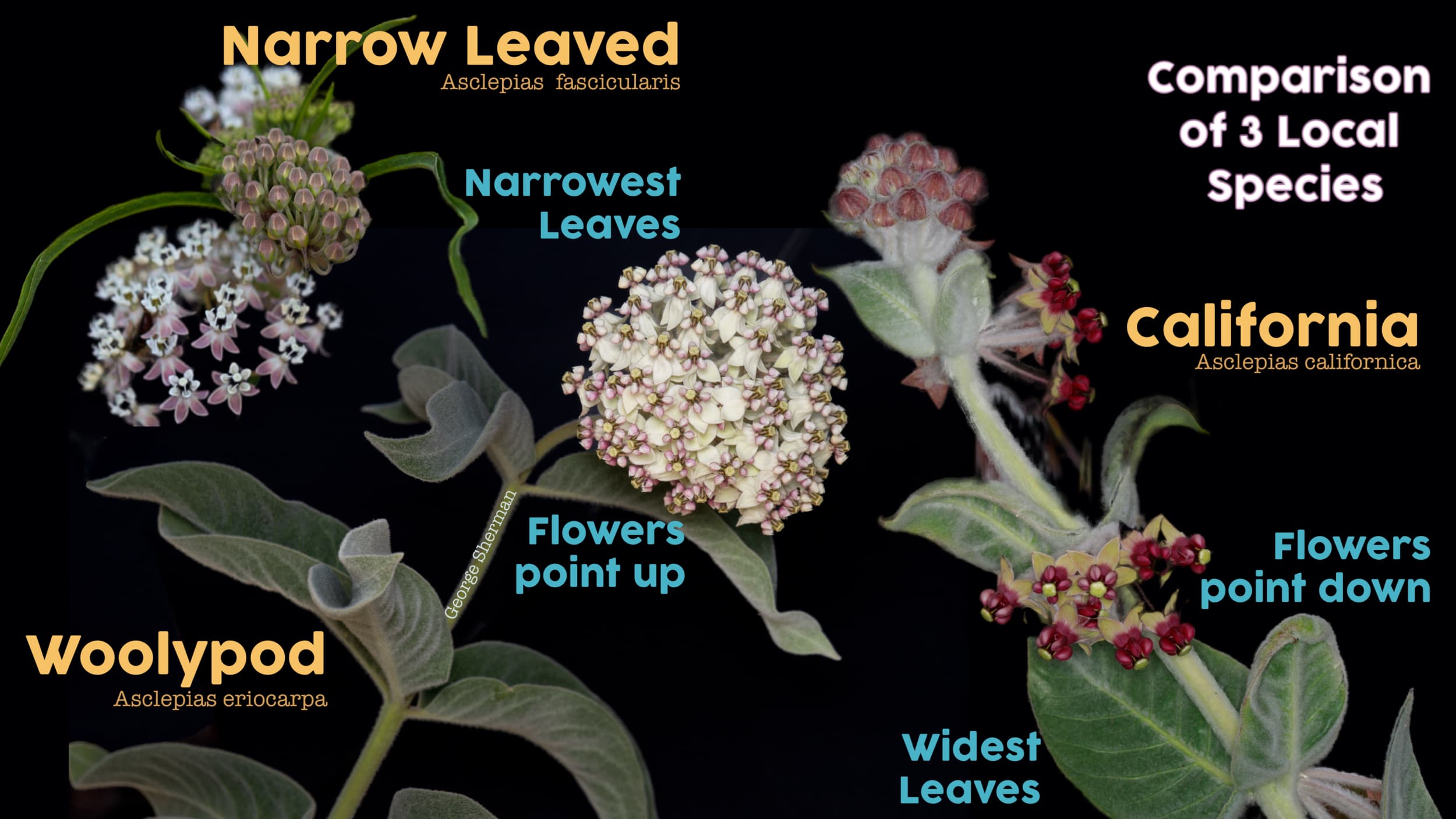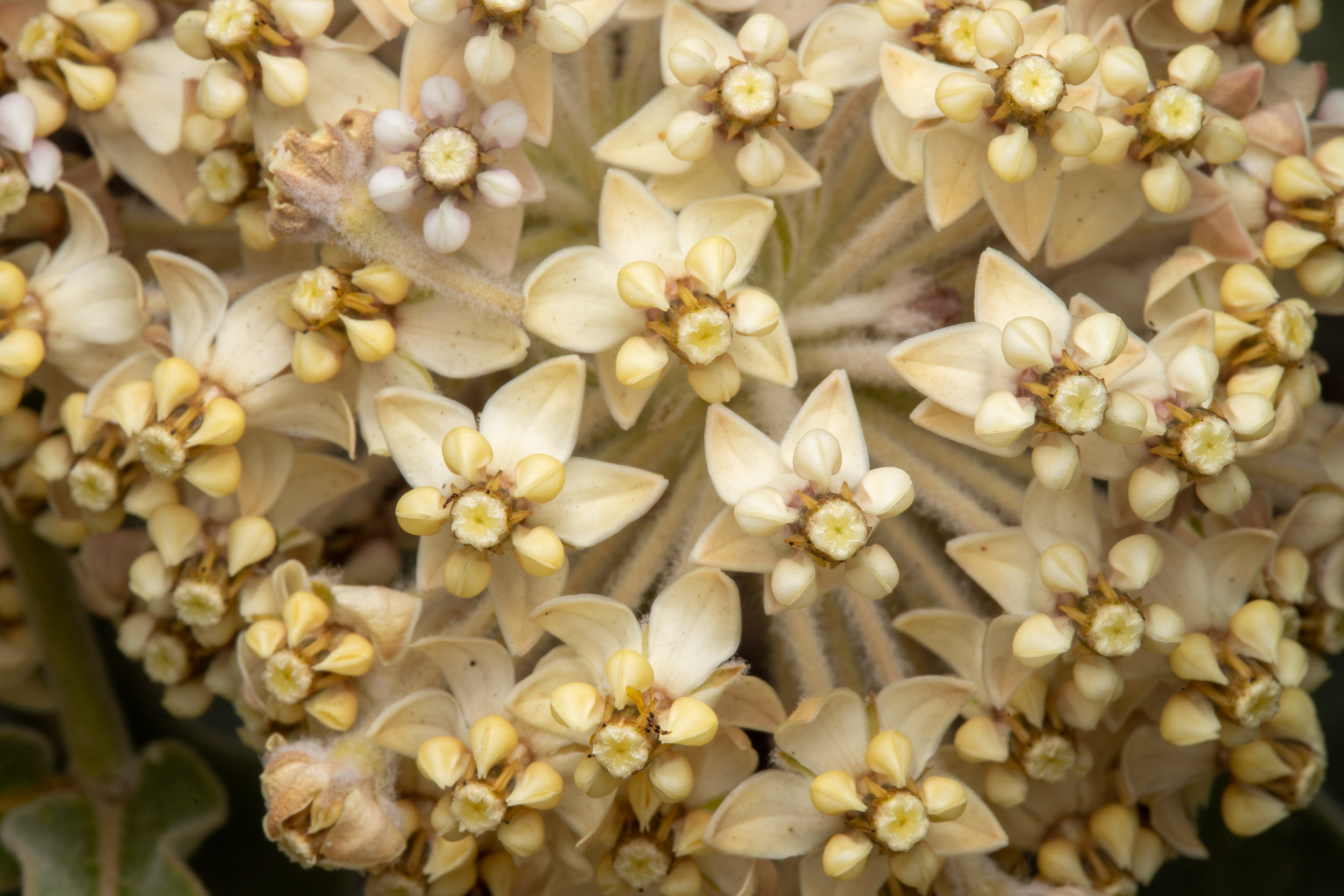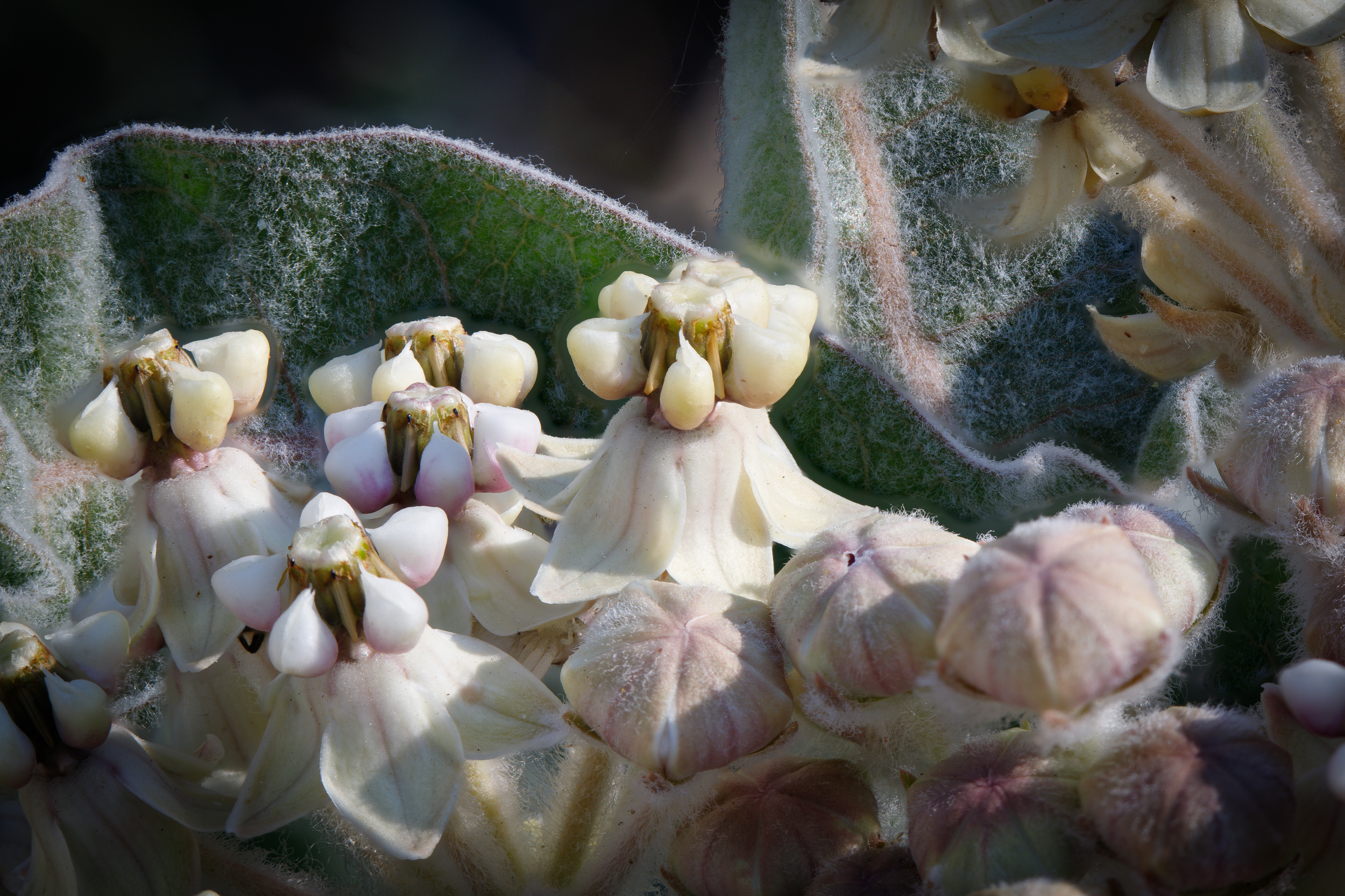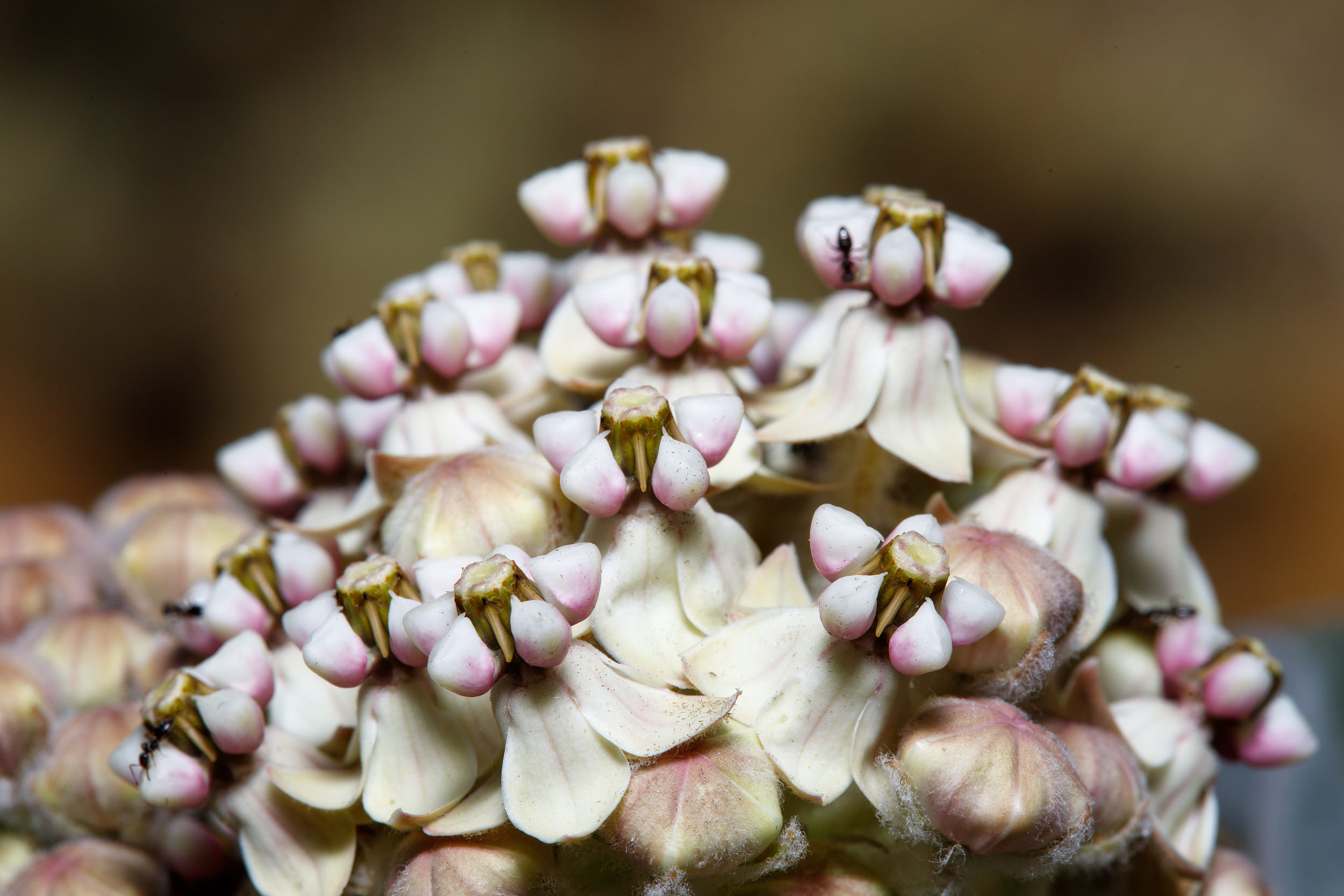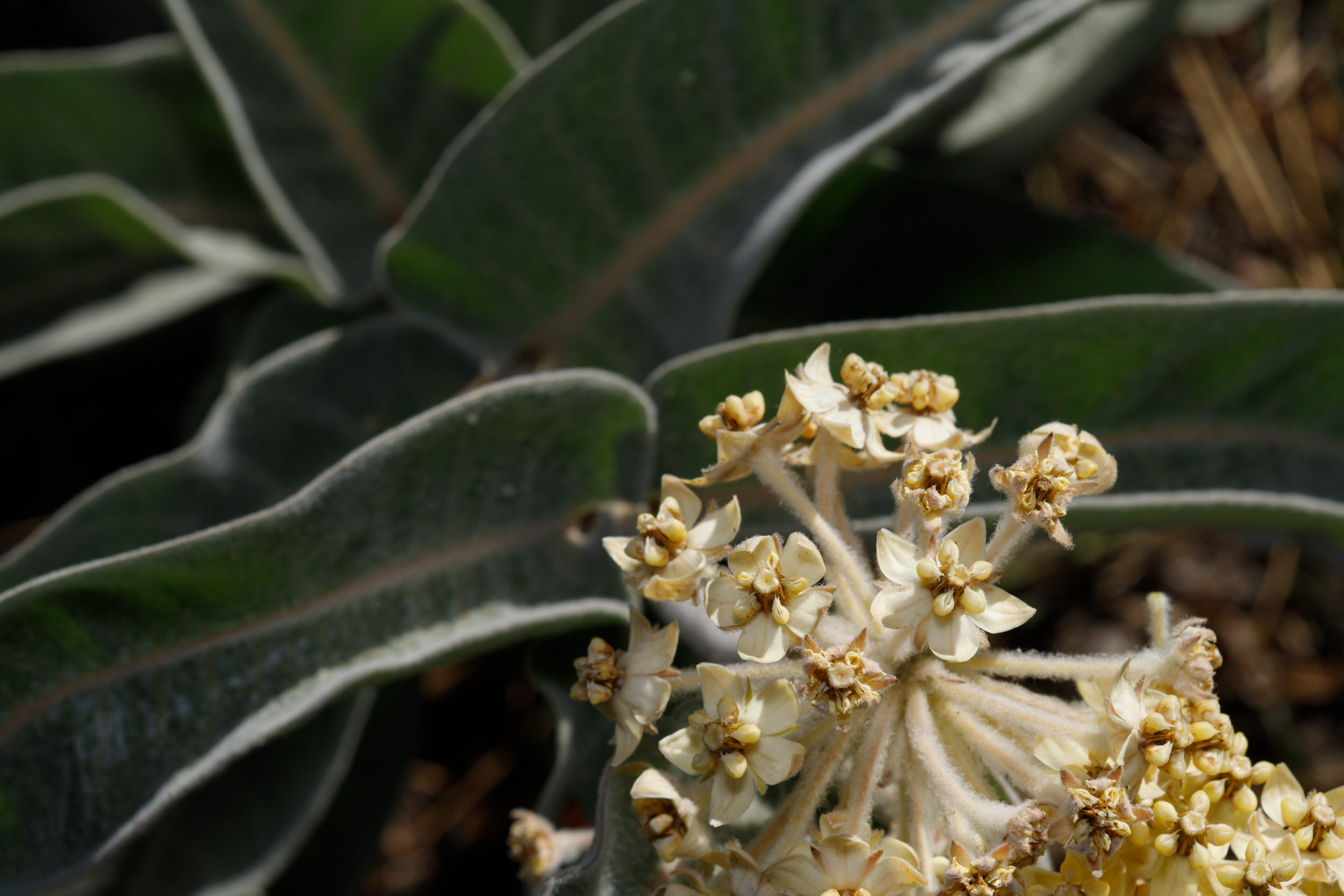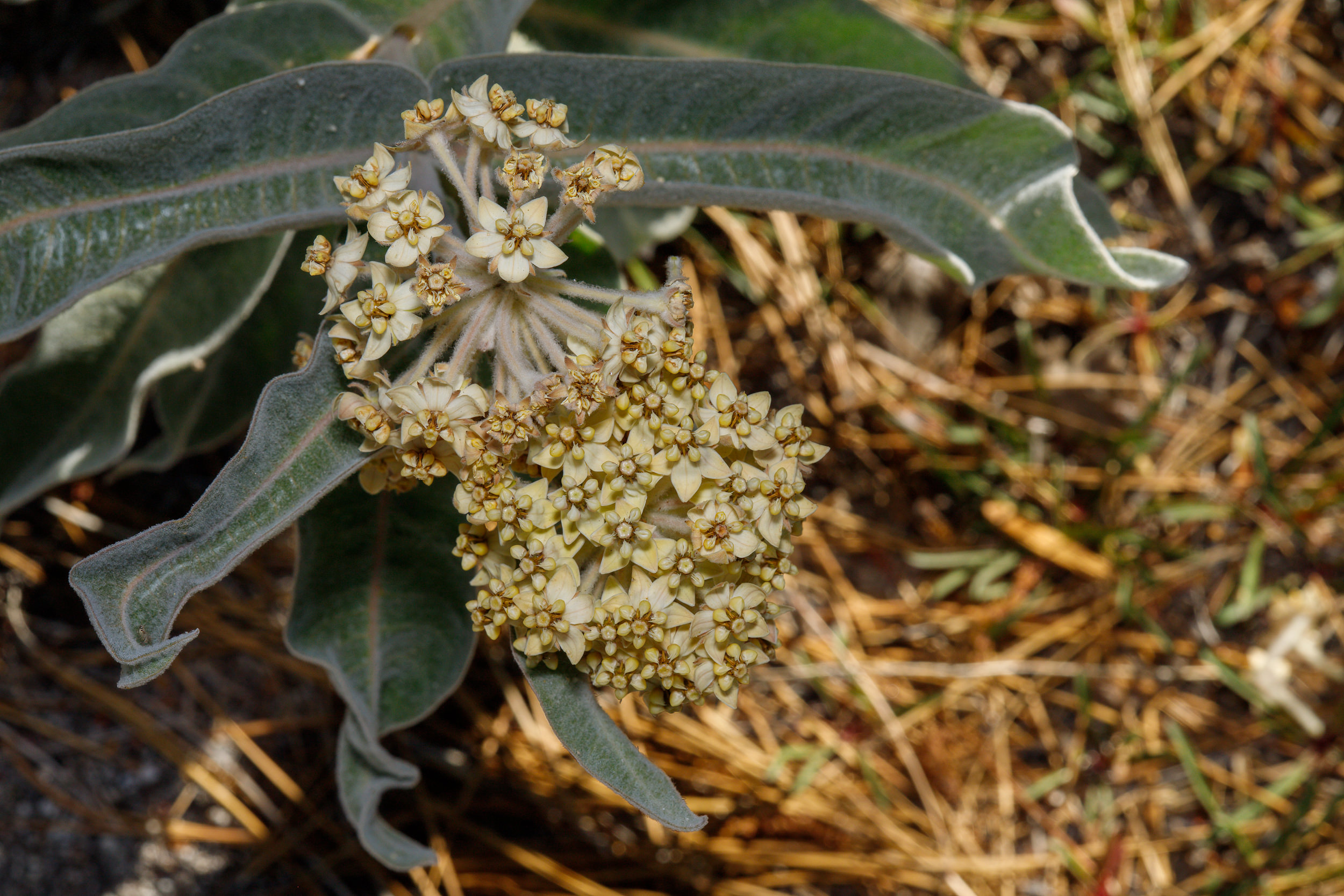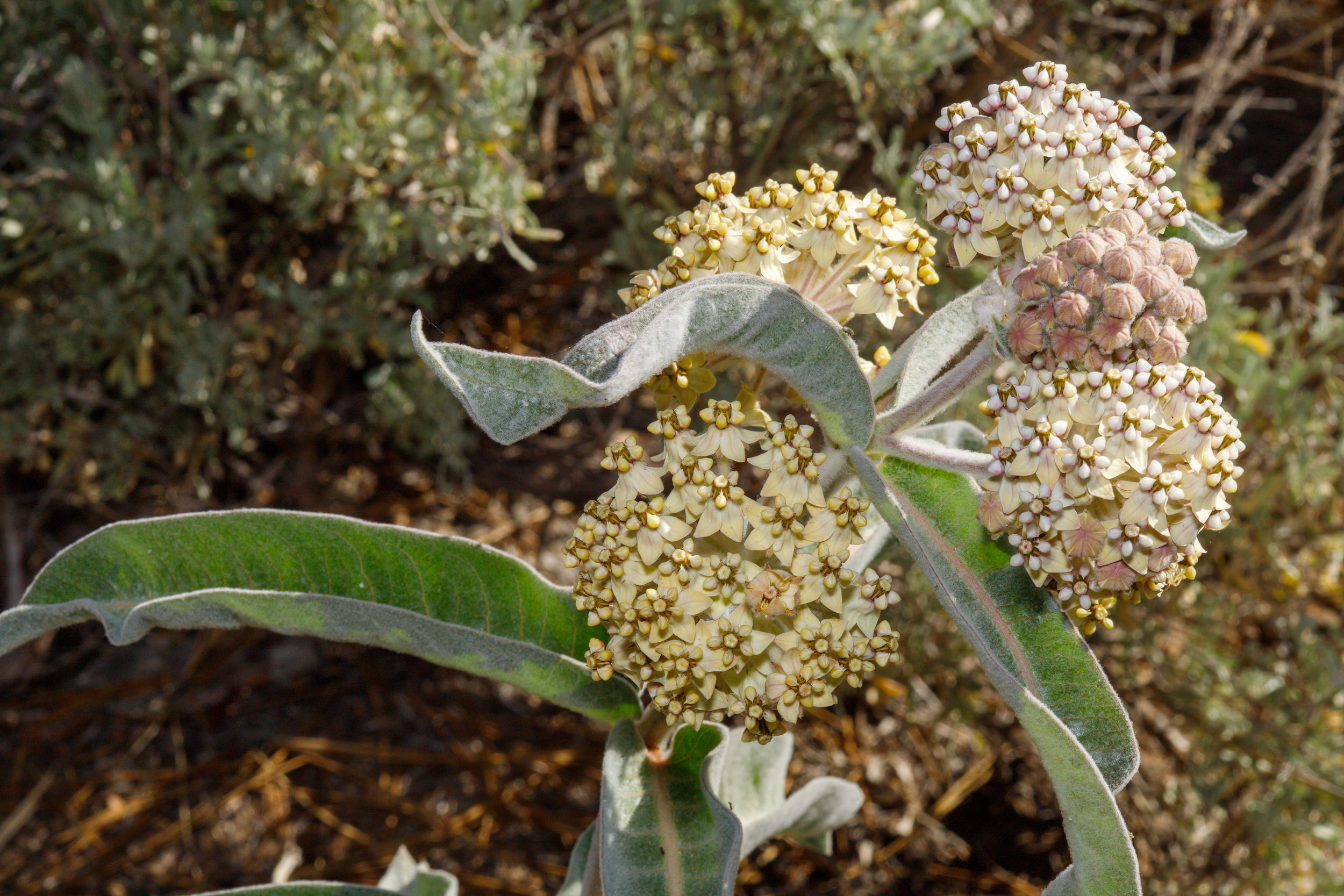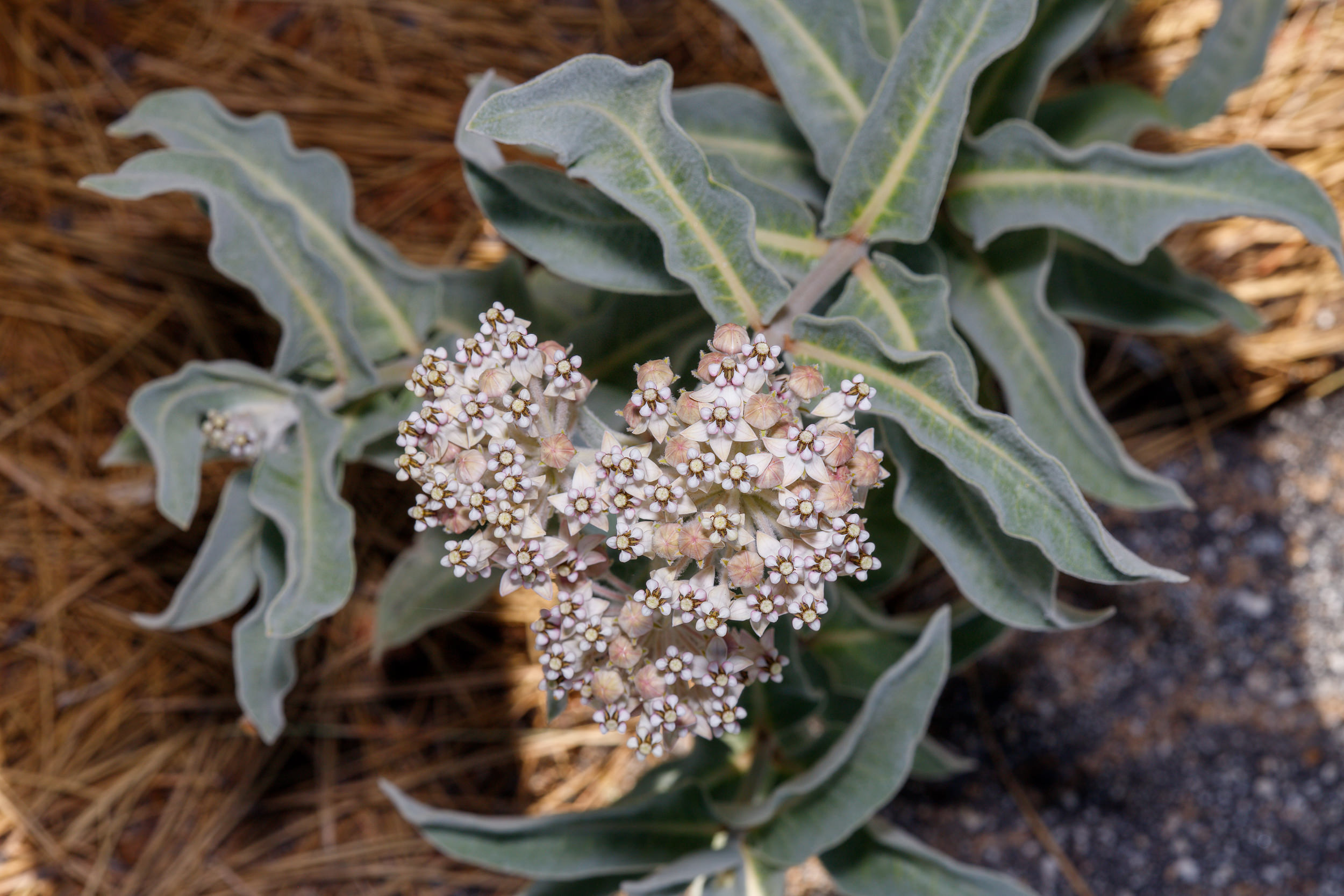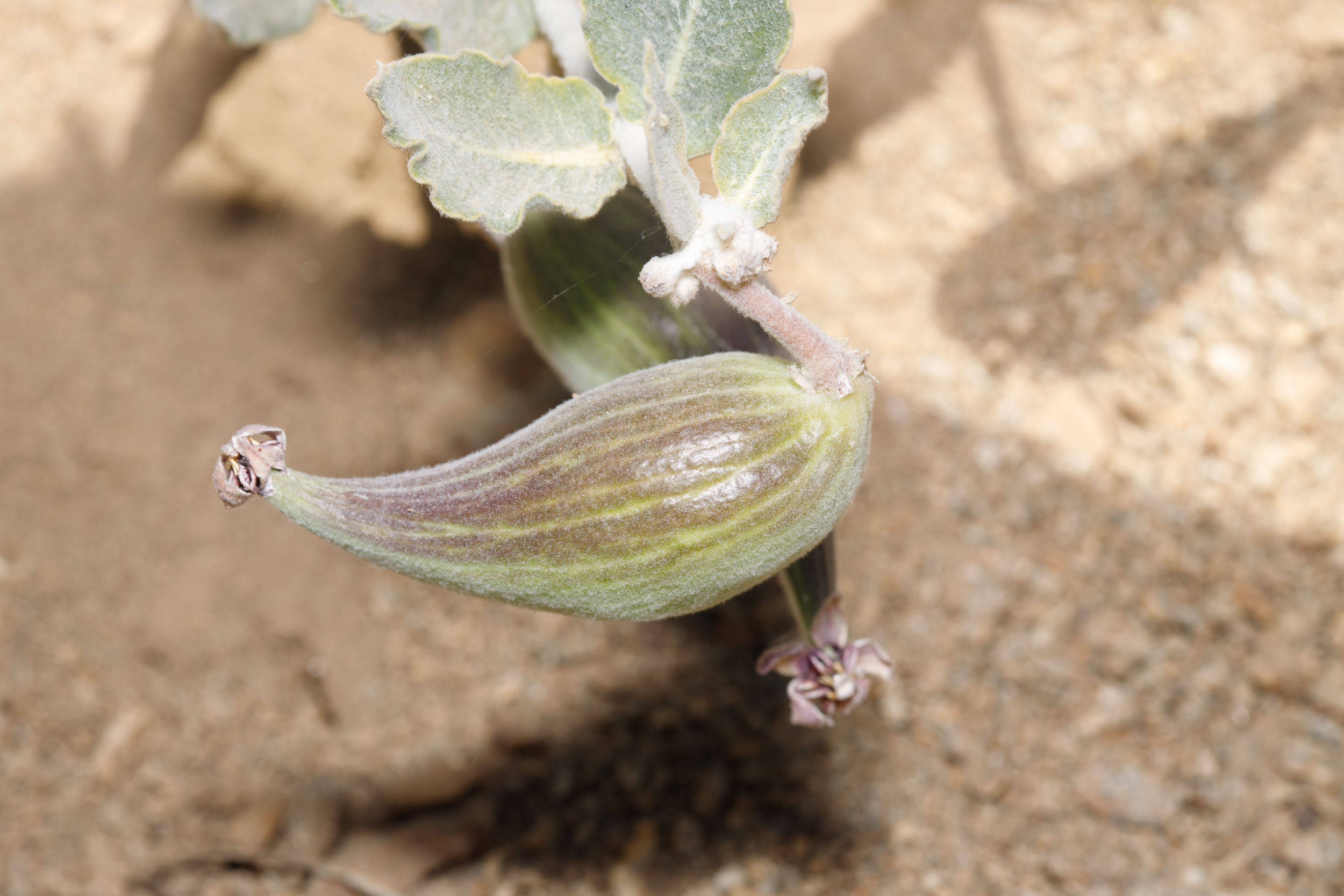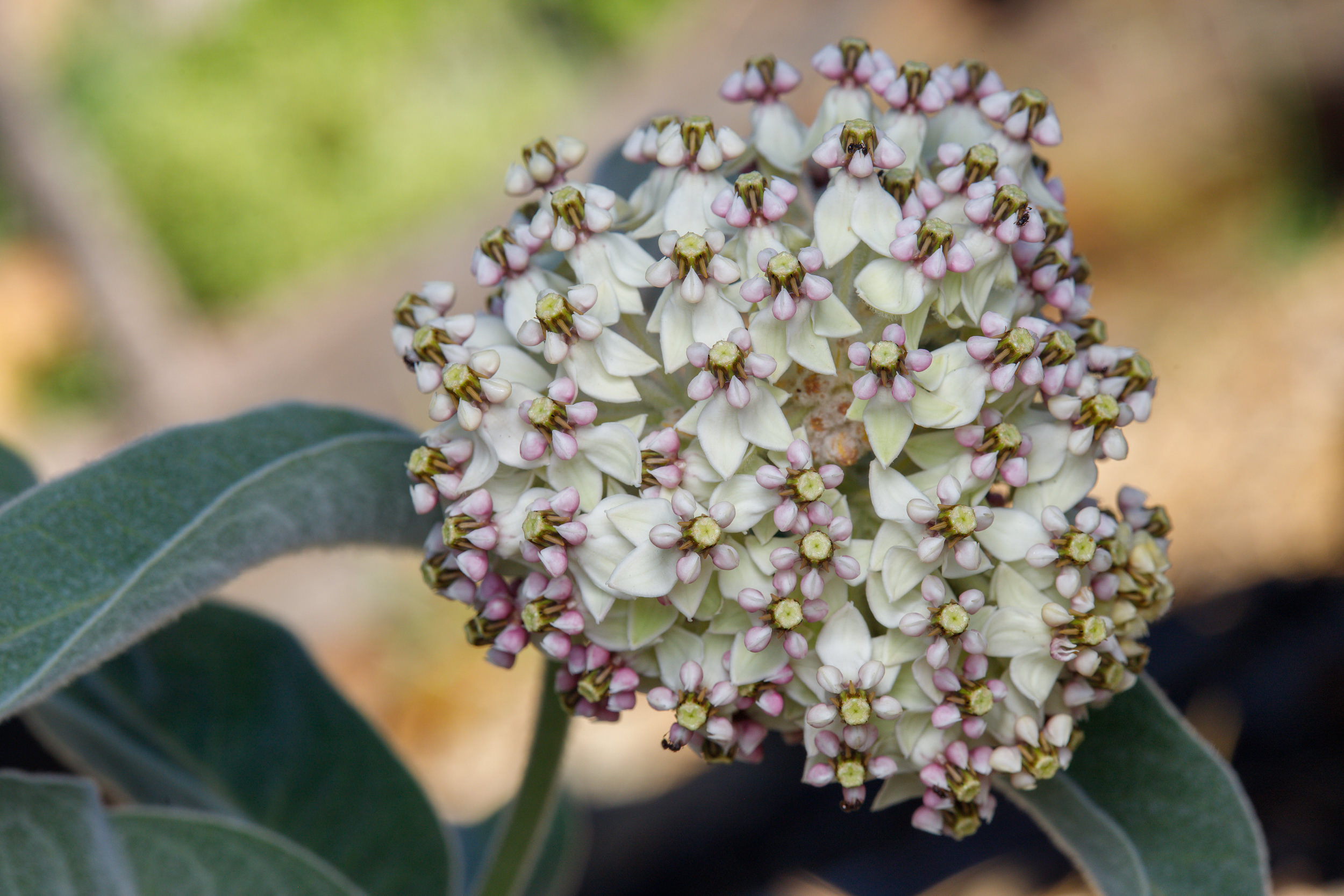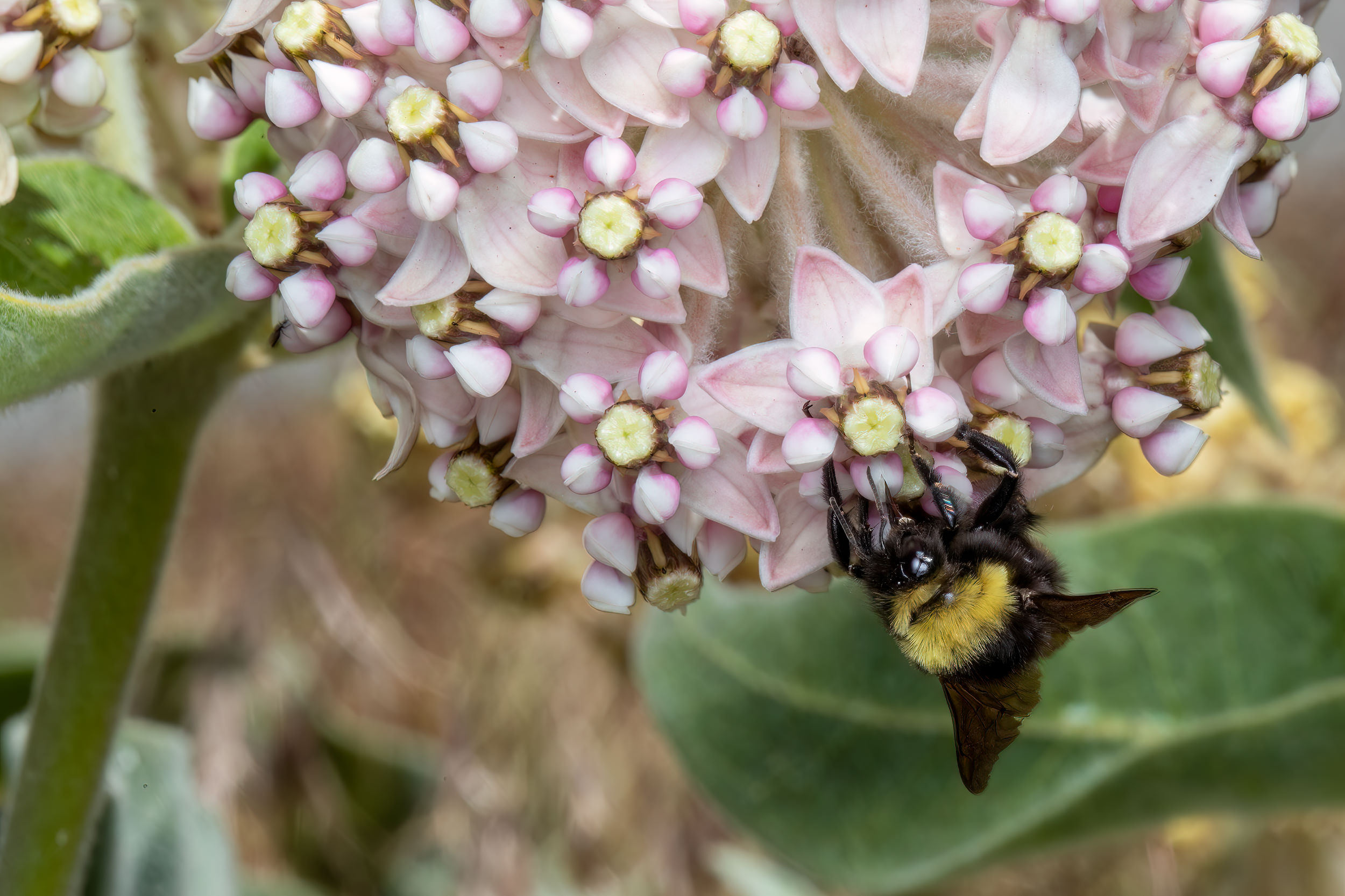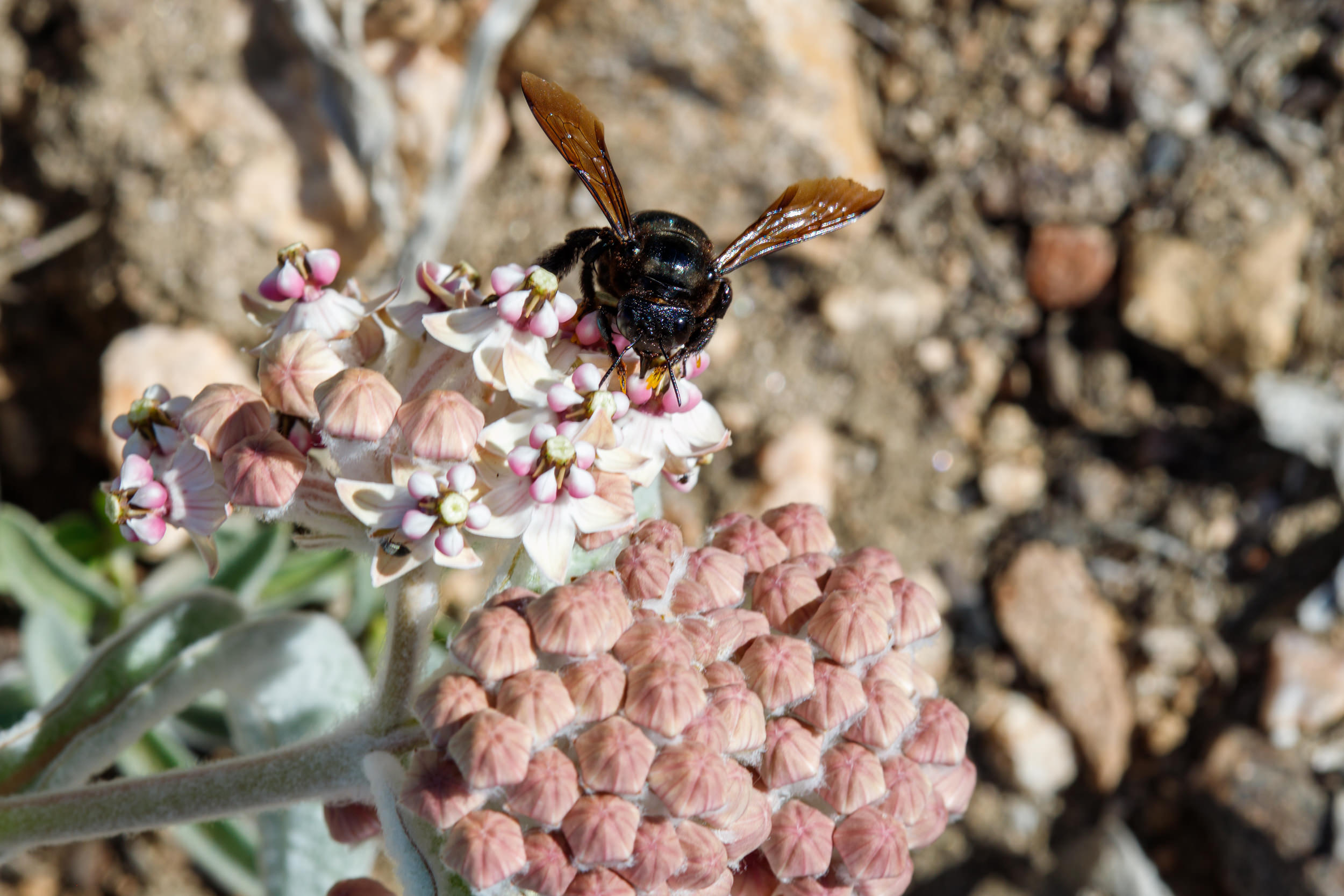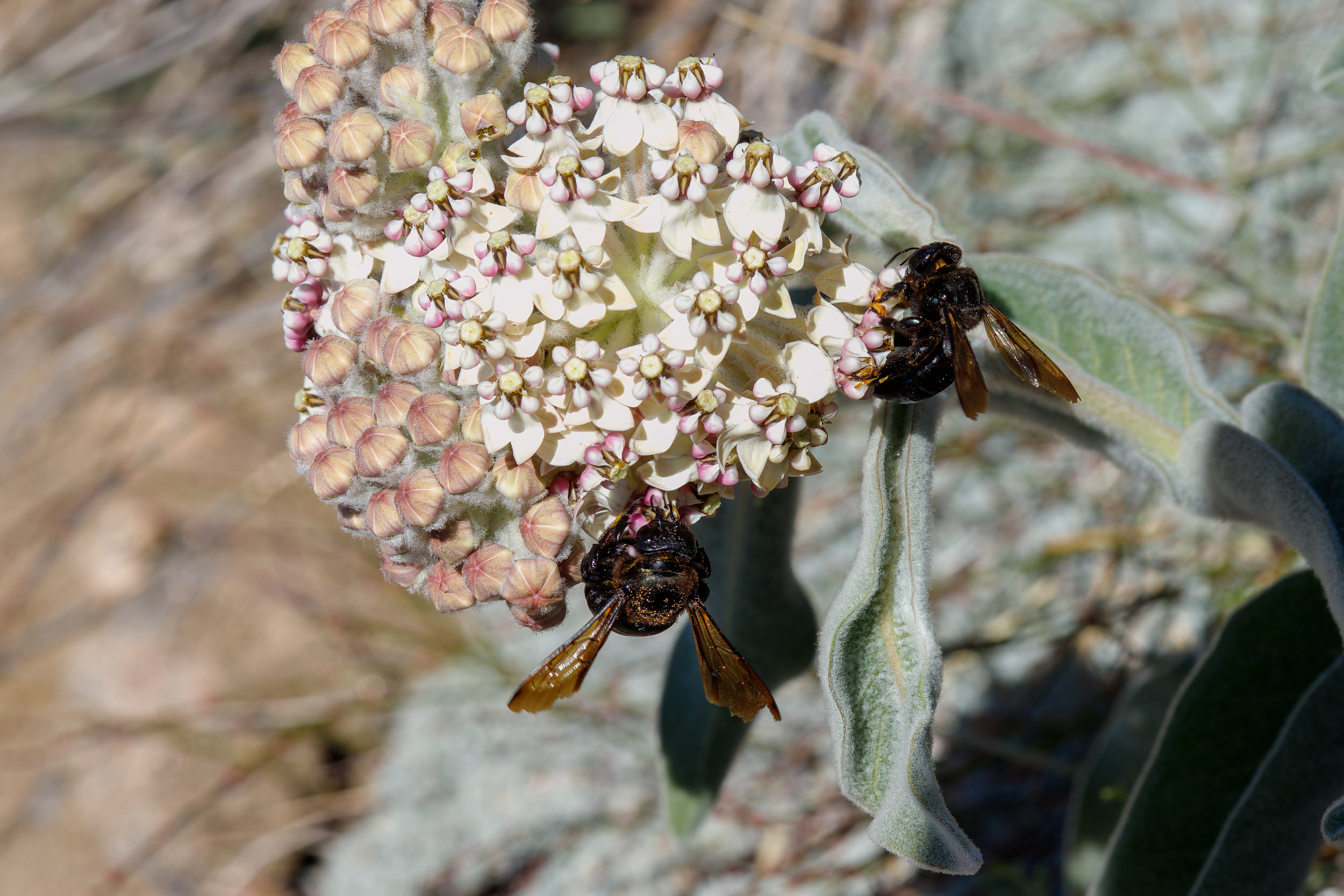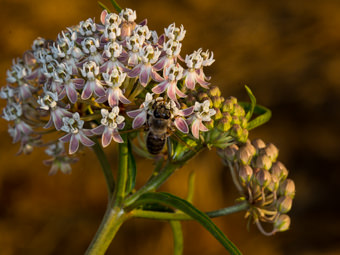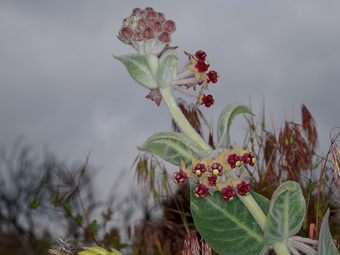Woolypod Milkweed
- Asclepias eriocarpa
| Common Name(s): | Woolypod Milkweed |
| Scientific Name: | Asclepias eriocarpa |
| Family: | Apocynaceae (Dogbane) |
| Plant Type: | Perennial |
| Size: | 1 to 3 feet |
| Habitat: | chaparral, grasslands, coastal sage scrub, and oak woodlands. |
| Blooms: | June to August |
| Fire Response: | Germinate from Seed |
Woolypod Milkweed/Indian Milkweed - Asclepias eriocarpa, is a perennial herb/subshrub in the Apocynaceae (dogbane) family. This native plant is found in a few locations in the Santa Monica Mountains but is plentiful in other ranges of California, Oregon, Nevada, Utah & Arizona and down into Baja California. This milkweed prefers dry open areas, including chaparral, grasslands, coastal sage scrub, and oak woodlands. Crags Road in Malibu Creek State Park is a location that has documented sitings over the years. The common name refers to the numerous hairs that give the plant a noticeably fuzzy or woolly appearance.
Woolypod milkweeds vary in size ranges from 1 to 3 feet tall and often forms in clumps. Stems & Leaves are woolly or felt-like, covered with silvery-white hairs. Leaves are opposite or whorled, long (longer at base and decreasing in size towards the crown). The mid-rib is quite pronounced on a leaf that is narrower in width than the length.
The distinctive cream to pale pink flowers, with reflexed petals and a central crown (corona) are an attractant to admirers and pollinators. Flowers blooms in mid to late summer (June–August). Flowers range in color from Pale pink, cream, or white in rounded clusters of flowers, each flower with 5 reflexed petals (bent back), flowers face upward and have 5 hoods and horns. If you are lucky enough to find them blooming and visited by bees of all sizes, butterflies and tarantula hawks - sit down quietly and marvel at this plant's ability to produce copious amounts of nectar long after the initial blooms of spring have faded. After the flowers have been pollinated, large, fuzzy seed pods with silky-haired seeds will be dispersed by wind.
One of the most striking characteristics of milkweed can be its expansive growth. What appear to be separate plants above ground are actually part of a connected colony, linked by an underground network of rhizomes. Every part of the plant (from root to flower) contains its signature milky sap, which flows continuously as the plant matures. In response to light and warmth, the plant begins to flower - producing numerous large clusters. Just as the stems and leaves are filled with sap, the flowers provide a seemingly unlimited amount of sweet nectar. This abundance draws a wide array of insects, many of which rely on milkweed for their survival.
The indigenous peoples of California had many uses for this plant from cordage to chewing gum; the milky sap within the leaves is flavorful and chewy when cooked.
Asclepias eriocarpa is also an important and specific Monarch butterfly food plant in nectar and vegetation, and cocoon habitat plant. The alkaloids they ingest from the plant are retained in the butterfly, making it unpalatable to predators. It can cause minor dermatitis in humans.
Response to Fire: ability to resume growth from its roots - they are rhizomes [a continuously growing horizontal underground stem which puts out lateral shoots and adventitious roots at intervals]. Like other milkweeds, a second blooming can occur if timing and conditions after a fire are favorable. [https://www.fs.usda.gov/database/feis/plants/forb/ascspe/all.html]
Link to Calflora.net - the best source of this fascinating information
Name Origin: In Greek, Asclepias translates as “to help or save” in reference to the medicinal qualities of several species. Name for the Greek God of healing Asklepios. The genus Asclepias was published by Carl Linnaeus in 1753. eriocarpa wooly fruited.
Contributed by George Sherman
Featured Plants in the Apocynaceae (Dogbane) Family:
Last modified: July 15 2025 14:56:32.
Number of Images: 14
Image Size Total: 9,613,990
References:
Wildflowers of the Santa Monica Mountains, by Milt McAuleyFlowering Plants: The Santa Monica Mountains, Coastal and Chaparral Regions of Southern California, by Nancy Dale
Chumash Ethnobotany: Plant Knowledge Among the Chumash People, by Jan Timbrook
Leaf Shapes Primer - Botanical Terms for Leaves: - Link
